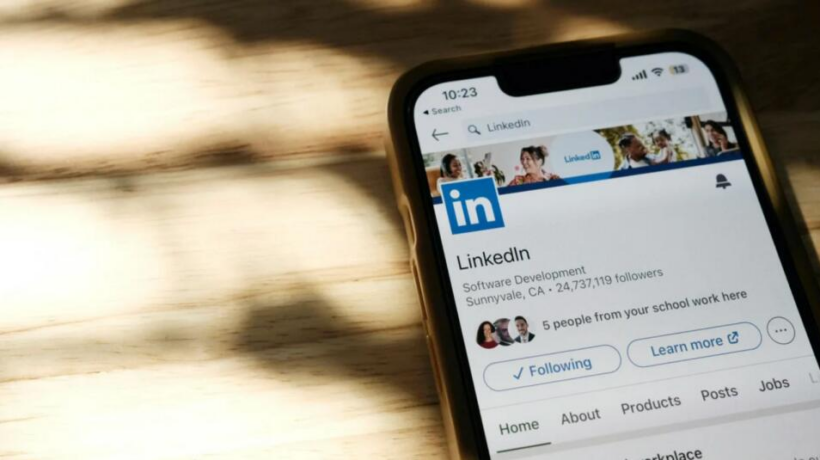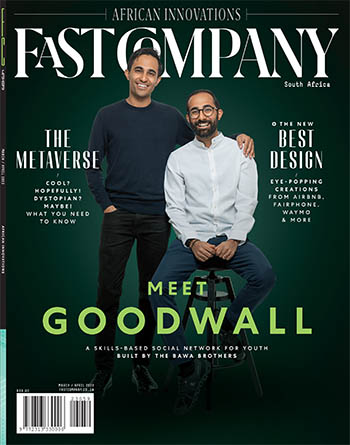Large online platforms have largely given up on the news business. Meta finally removed its dedicated tools for news publishers. Google is experimenting with removing the news tab from search results. AI chatbots are eating the last remaining ways that publishers can drive traffic to their sites. And Elon Musk, the owner of X, the site formerly known as Twitter, spends most of his days railing against the mainstream media.
All of this has led to some pretty serious soul-searching among America’s journalists. Is the future email newsletters? Will podcasts save the news? Does everything need to be short vertical video now? Well, here’s a question that it might be time to start asking: What about LinkedIn?
Let’s first get the obvious out of the way: LinkedIn has never been a particularly sexy online platform. Yes, it has a huge amount of users — their site currently boasts about a billion across hundreds of countries. But it’s less clear how many of them are actively using it on a daily basis to read and share content. A spokesperson for LinkedIn tells me that over 100 million members are interacting with content in their feeds every week.
When its users are creating and engaging with public content on its main feed, it also tends to be somewhat different than what you might see opening up, say, X or Threads. A LinkedIn account is tied to your work history and, assumedly, your real identity. Which means LinkedIn posts tend to oscillate between bland and deeply unhinged. In 2017, the latter, a capitalist stream of consciousness posting popular with the site’s business-centric super-posters, was nicknamed “broetry“. That culture is not nearly as prominent on the platform as it used to be — much of it spread to X during the 2020 crypto bull market (back when it was still known as Twitter) — but there’s still a general HR-friendly, work-safe vibe to the whole place.
But people are getting their news on LinkedIn.
According to a Pew survey released last November, a little under a quarter of LinkedIn users say they get their news on the site. According to that same survey, LinkedIn news consumers are fairly evenly split between men and women, are overwhelmingly liberal, and almost 70% of them are under 49. So even though the platform may feel like an artifact from a different era of the web, where social networks functioned primarily as directories of personal contacts, that does appear to be changing.
As for what they’re reading and who they’re following, it’s a little harder to figure out. If you try and look up who the top influencers are on LinkedIn, you’ll find the same lists of well-known business personalities — Bill Gates, Richard Branson, Gary Vaynerchuk. And while they might be sharing content and have millions of followers, it’s not exactly journalism. Vaynerchuk, in particular, is a super poster, but all he really talks about is himself. Though, his new wine tasting show is pretty fun.
If you want to see a good example of what kind of thing is going viral on LinkedIn at any moment, this video a product manager in Madrid posted has blown up on LinkedIn. It is, essentially, a video resume. The comments underneath are impossibly positive, which, according to creators using LinkedIn I’ve spoken to, is largely true for everything shared to the site. (Though it is still a social network and people will argue with each other.)
But being an online platform that publishers might be able to actually rely on goes beyond influencer link-sharing. And it’s in this area that LinkedIn does actually appear to be committed. At least more than other platforms.
The site has provided what’s honestly an incredibly powerful journalism tool to reporters for over a decade. It has also in the last few years launched a podcast network, a native newsletter product, and a premium subscription tool. LinkedIn’s spokesperson says they’re working directly with over 400 publishers and those publishers have gained a combined 240 million followers. And this kind of support isn’t new actually.
Of course, many platforms have some version of these features now. So are they enough to actually turn LinkedIn users into a real audience?
Journalist Alex Kantrowitz thinks so. In many ways, Kantrowitz is the perfect candidate for appraising whether or not LinkedIn is a suitable home for online journalism right now. He’s the current digital media walkabout personified. He was one of the reporters to coin the term “LinkedIn broetry” back in 2017. Since then he’s started his own Substack publication, called Big Technology, and two years ago, began working with LinkedIn on his Big Technology podcast.
“The podcast has tripled in size in two years,” he tells me.
Kantrowitz says one of the biggest surprises is how much friendlier LinkedIn users are compared to other platforms. “They realize that everything they write there is going to be seen by anyone who they work with, or has the potential to hire them. So the comments tend to be more constructive than other social networks,” he says.
His podcast isn’t distributed inside of LinkedIn, though. It goes out via Megaphone and is supported by LinkedIn’s ad network. But by working with LinkedIn, he’s also grown his presence on the platform, as well. “This is directionally accurate,” he says. “I think I’ve gone from around 4,000-5,000 followers on LinkedIn when I started working with the podcast network to 20,000 today.”
And it’s this kind of growth that is beginning to make LinkedIn feel like a viable replacement for the journalism world’s favorite social network, Twitter, or the traffic powerhouse that Facebook used to be. Though, with some pretty massive caveats.
LinkedIn is a professional network, by definition. And even though the company has rolled out entertainment features, like vertical videos, that isn’t changing. Also, while its users are sharing articles from large publishers, the articles that are performing best on the site tend to be almost exclusively about business.
In December, however, LinkedIn’s Ads Blog shared a list of the most engaging articles on LinkedIn in 2023. All of them had some connection to corporate America. The two most-engaged with articles, with over 100,000 engagements each, were a Washington Post story titled, “A four-day workweek pilot was so successful most firms say they won’t go back” and a Vogue Business story titled, “The future of influencer marketing is offline and hyper-niche“.
Kyley Schultz, the assignment editor for The Washington Post‘s social team, says her team has in recent months started to take LinkedIn more seriously as a traffic source. The paper launched a newsletter on the platform called Post Grad, which has a quarter of a million readers. (Fast Company debuted its AI Decoded newsletter on LinkedIn last year, and in just 10 months it’s already amassed over 210,000 followers.)
As Schultz sees it, the point of finding a new home for news online isn’t about finding a feed you can dump your stories into and expect people to mindlessly click. And if publishers think that LinkedIn is the place that strategy will finally work, they are very mistaken.
“People are going to be turned off by that and go somewhere else,” she says.
She also says that as she’s begun using the social network more she’s begun to wonder if the social network is actually more versatile than its reputation leads people to believe. She says that the notion that LinkedIn users only want to read about business content is a bit of a self-fulfilling prophecy.
“What is the success rate of someone completely pivoting and trying something else,” she says of posting a more divorce,” she says of posting more diverse types of stories on LinkedIn. “Like, is it actually going to fail? Or are there just not enough people trying it?”
And as more publishers begin using the site more consistently, that could change. In fact, social media analyst Matt Navarra tells me it’s not impossible to imagine LinkedIn evolving into a more mainstream feeling social network as it becomes a destination for news content.
“It’s very much more like a traditional social network where people are sharing news and memes and funny stuff,” he says.
He says his personal LinkedIn usage goes in phases, but nowadays it’s not uncommon to see pretty much the same content you see on sites like X and Threads, just with slightly more polite replies underneath. And like Kantrowitz, he thinks the lack of toxicity is why news is doing better there.
“It doesn’t have quite as much of the shit,” he says. “The way that people engage is less controversial and troubling. And therefore it’s easier for [LinkedIn] to stick with news and not have all the problems of misinformation because they don’t seem to have that behavior.”
But the lack of toxicity might not be as real as its creators think it is.
Last year, LinkedIn added a “rewrite with AI” tool that has been criticized for opening the floodgates on AI spam. And AI-generated profile pictures have been an issue on the site for years. As have fake commenters. And the real test for LinkedIn’s super positive community was Vivek Ramaswamy’s short-lived presidential campaign which was, in part, driven by his LinkedIn posts. Ramaswamy’s account was briefly locked after the site determined his posts contained “misleading or inaccurate information.” It’s unlocked now, but he hasn’t posted in six months.
But finding a home for news publishers in 2024 isn’t about finding a perfect fit, but rather finding one that’s close enough. The traffic firehose days of the 2010s aren’t coming back. And LinkedIn is not the secret to infinite pageviews. But it might be fertile ground to build an audience with manageable issues.
For all its retro, business casual vibe, it’s more in line with the way we tend to use the internet now. Users aren’t looking for a one-stop shop, a central feed to consume all of their content. They’re using specific platforms to express specific parts of themselves. And though internet engagement is always a toss up, there is one constant we can always count on: People at work are desperate for something to do other than work, and the news can serve as a nice distraction.







